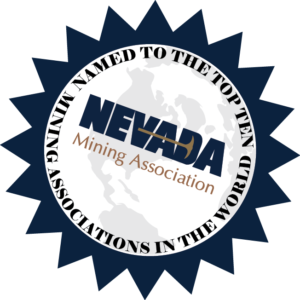Nevada Mining: The State’s Original STEM Industry
The Nevada Mining Association has spent more than 100 years championing the mining industry in the Silver State, but mining’s history in the region goes back much farther. Before Nevada was even a concept, there is evidence that native peoples mined mineral deposits to make tools, weapons, and engage in trade. The development of mid-nineteenth century silver mines in western Nevada led to statehood. During the first and second world wars, Nevada minerals provided for the nation’s defense. Beginning in the mid-1960s, northern Nevada became one of the largest gold producers in the world, a status the state continues to hold well into the 21st century. Now, in the New Nevada, the state’s mines yield precious and industrial metals and minerals that are essential to the success of the economy’s emerging sectors in renewable energy, advanced manufacturing, and innovative technologies.
Here you will find a brief history of mining’s role in the history of the Silver State, starting before the State was ever conceived and continuing to the present day.
Many organizations are great sources of additional information about Nevada’s mining history. Links to several of them are provided here for your convenience, but should not be considered a comprehensive bibliography of resources about Nevada or mining history:
For general information about Nevada history, we suggest starting with the Nevada Historical Society and the Nevada State Museum.
For general information about mining history, we suggest starting with the Mining History Association.
For general information about mining in Nevada over time, we suggest starting with the Nevada Bureau of Mines and Geology.
Pre-territorial Nevada
Earliest residents mined deposits of obsidian, quartz, agate, jasper, turquoise, and other elements to make tools and weapons. Evidence also exists that these valued commodities were used to engage in economic exchanges with people who lived outside the Great Basin.
1849: Gold Discovered in the Utah Territory
First recorded discovery of gold within the area now known as Nevada. One year later, this are would be incorporated as part of the Utah Territory as part of the Organic Act of 1850.
1859: “Rush to Washoe”
The discovery of the Comstock Lode, the first major silver find in the United States, becomes public and the “Rush to Washoe” begins. To learn more about Comstock history, start with the Comstock Foundation of History and Culture.
1861: The Nevada Territory
Nevada officially made a Territory of the United States, separate from the neighboring Utah Territory.
1864: Statehood
The Territory of Nevada becomes the State of Nevada. At the time, the Comstock was the major mining district, but prospectors were fanning across the state. Over the next 10 years, they would stake hundreds of claims and begin the development of farflung mining districts, some of which are still producing today.
1869: The Railroad
Transcontinental railroad completed. The route through northern Nevada established several towns, from Reno to Wendover, and provided easier access to the interior of the Great Basin for mineral exploration and development.
1877: Mining in Decline
Comstock production peaks.
1900: Mining Resurgence
Discoveries by Jim and Belle Butler launch mining boom and lift Nevada out of a two-decade economic depression. Belle Butler’s claim becomes the Mizpah Mine, the most productive silver mine in the Tonopah era. To learn more about Tonopah history, start with the Tonopah Historic Mining Park.
For the next twenty years, mining flourished across Nevada, and many new towns sprang up to support nearby mines that were producing gold, silver, and copper. During World War I, Nevada’s mines provided much-needed materials for military production.
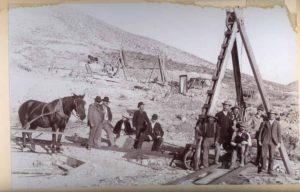
1908: Mackay’s Namesake
Mackay School of Mines endowed at the University of Nevada, Reno. The school is named after John William Mackay, a prominent Comstock miner and businessman. A statue of John Mackay anchors the quad at the University of Nevada, in front of the Mackay Mines building.
Today, the Mackay School of Earth Sciences and Engineering is one of the great mining educational institutions in the world, and produces some of the top talent in the 21st-century mining industry.
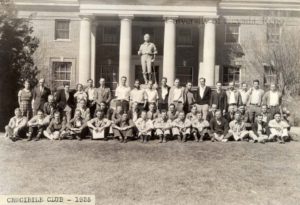
1913: The Roots of Nevada’s Mining Association
Nevada Mine Operators Association established in Tonopah. Later that year, the organization moved its headquarters to Reno.
World War II: Nevada Supports the War Effort
Nevada mines again support the nation’s military infrastructure with the production of tungsten, barite, lead, and zinc.
1953: Same Group, New Name
The Nevada Mine Operators Association changes its name to the Nevada Mining Association.
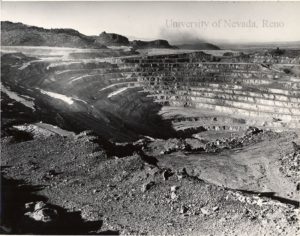
1965: The Carlin Trend
The first gold bar is poured from the Carlin Trend in northeastern Nevada. This region continues to be one of the most productive mining areas in the world.
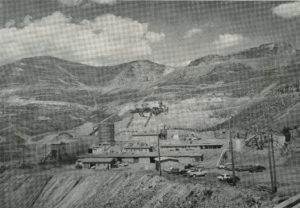
1989: Reclamation in Modern Mining
Reclamation of mined areas is required by the State of Nevada. In cooperation with the federal land management agencies, the State begins collecting bonds from mine operators to safeguard against future environmental challenges. Currently, that bond fund is nearly $3 billion.
2015: Accolades
Recognized for its successful advocacy efforts and promotion of the 21st-century mining industry, the Nevada Mining Association is named one of the top ten mining associations in the world. It is the only state-level organization in the world to receive such a distinction.
